
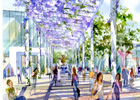
The New-City’s concept, design and implementation are in line with the Future Europe 2010-2020 Strategy and capitalize on the synergy of education, research and innovation, proposing innovational programs utilizing the resources of EU Funds, national funds and private investment.
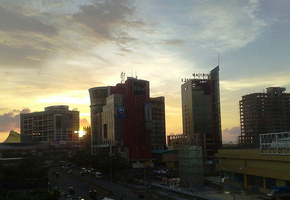
Navi Mumbai is a planned city to the east of Mumbai proper, just across the Thane creek. Beginning in the 1960s, the Maharashtra government made a concerted effort to reduce congestion, crowding and environmental degradation in Mumbai by transferring industry and commerce as well as building new residences in Navi Mumbai. In some sense, Navi Mumbai is just another suburb of Mumbai, but in some other ways, Navi Mumbai is the solution to Mumbai’s problems.
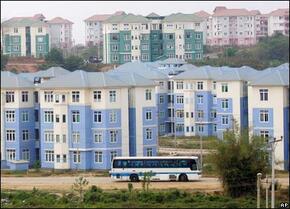
As you plan your next big trip, centuries-old hot spots like Rome and Paris may come to mind. But if you’ve been there and done that, you might want to check out some new cities that have sprung up recently around the world.

A series of six short films are to be made around the Old and New Towns with an actor playing the part of Topham. The films are planned as part of the ongoing project by Edinburgh World Heritage, looking at life in Georgian Edinburgh and how the city changed with the building of the New Town.
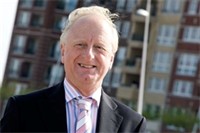
Na 28 jaar vertrekt William van der Meulen als stadspromotor van Lelystad. Hij kwam in 1982, vijftien jaar na de pioniers die in de drooggemalen polder van oost-Flevoland hun huizen optrokken. Van der Meulen (64) bouwde het imago van de nieuwe stad.
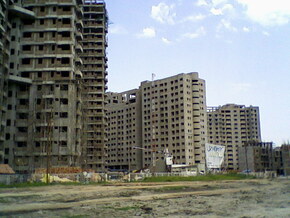
The Centre has selected Rajarhat as one of the eight upcoming satellite townships of the country, where it would sanction 80% of the total cost of implementing civic infrastructure projects.
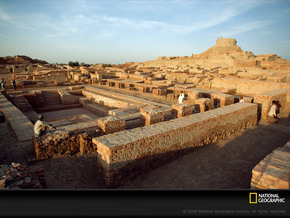
Rajesh Shukla’s article on Monday adds the perspective that some of India’s towns are statistical constructs, arising from a rise in population, so that paucity of urban facilities is a given. It is vital to appreciate that India’s dazzling growth comes from its towns: modern services and manufacturing cannot take place in rustic isolation.
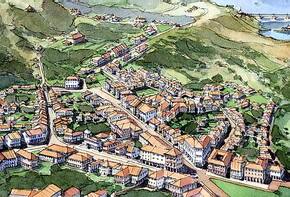
The Maharashtra State Road Transport Corporation (MSRTC), the country’s second-biggest public transport system, has plans to start city buses for local travel in the various new urban centres coming up in Maharashtra, and also Mumbai.
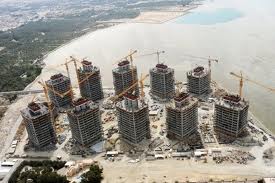
Bahrain plans to introduce environmentally friendly liquefied petroleum gas (LPG) into new housing projects. The possibility of laying underground pipes in the country’s new towns is now being studied, said Oil and Gas Affairs Minister and National Oil and Gas Authority (Noga) chairman Dr Abdulhussain Mirza.
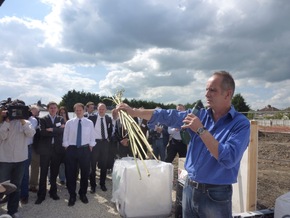
Housing minister Grant Shapps declared himself "philosophically predisposed" towards a "big and bold good initiative" last week. He was commenting on an informal new pressure group, backed by house building and architectural interests, which has just launched the idea of a New Town building programme.
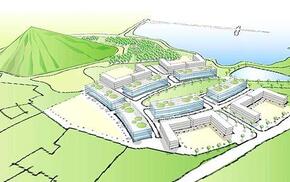
When I visited Ecobuild earlier in the year, an event billed as "the biggest showcase of sustainable construction products in the world", I left with the distinct impression that I had seen most of these products before. The only difference seemed to be that they all now had the word "eco" in front of them.
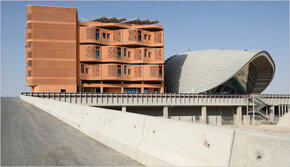
Back in 2007, when the government here announced its plan for “the world’s first zero-carbon city” on the outskirts of Abu Dhabi, many Westerners dismissed it as a gimmick — a faddish follow-up to neighboring Dubai’s half-mile-high tower in the desert and archipelago of man-made islands in the shape of palm trees.
The architect who will create Aberdeenshire’s newest town says he has little or no knowledge of the site and will listen to local opinion before formulating his vision for the new settlement.
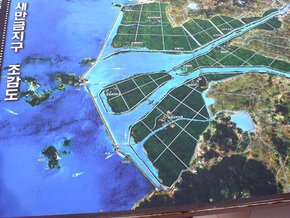
This year Brasília has been celebrating its 50th birthday. Brazil’s elegant, postcolonial capital was conceived as a new beginning for a society yet to be defined, and a modernist city that could create a new identity for the country and its society as radically contemporary but utterly distinct.
This year Brasília has been celebrating its 50th birthday. Brazil’s elegant, postcolonial capital was conceived as a new beginning for a society yet to be defined, and a modernist city that could create a new identity for the country and its society as radically contemporary but utterly distinct.
But Brasília has become that strangest of places, a beautiful failure, a city in which you can feel the ambition but are also confronted with the limitations of that optimistic modernism. Its centre is a perfectly-preserved museum of modernist design, its outskirts a shabby testament to a country – despite its growing power and status – still class-ridden, mired in poverty and surrounded by a halo of favelas (shanty towns).
EDITOR’S CHOICE
Saudi Arabia’s desert dream remains a work in progress - Sep-21
India, the ‘nation of villages’, faces an urban future - Sep-21
China’s rapid growth brings sprawl and missed opportunities - Sep-21
Will the wheels come off for hub-and-spoke Chinese mega-city of Wuhan? - Sep-21
Nowa Huta: a socialist showpiece forged in hard times - Sep-21
“Brasília could never be the city of the future, because our society remains that of the past,” Oscar Niemeyer, architect of the most beautiful buildings at its centre, says with a little sadness. A committed communist whose cigars are still personally sent to him by Fidel Castro, Mr Niemeyer – at 102 years old, a living monument to heroic modernism – admits that a city’s success is due only in small part to its architecture; it is everything else that determines its future.
The old architect succinctly and elegantly frames the problem of the new. The visionary city of the future is inevitably far more perfect when it remains a vision.
The building of cities from scratch is notoriously unpredictable, yet the combination of wild population growth and the desire of emerging or energy-rich economies to create cities as symbols of their arrival on the world stage is ensuring that more new cities are being built, faster, than at any time in history.
The planned new city is, of course, nothing new. Washington DC, Canberra, New Delhi, Ankara – many of the world’s capitals are planned, new cities, even if they are not that new any more. But they are almost invariably compared, unfavourably, with their respective countries’ bigger cities, exactly the “corrupt” or colonial metropolises they were established to replace – New York, Sydney, Mumbai or Istanbul.
If these new cities tended towards monoculture – the culture of administration – other monocultural cities have fared even worse. The windswept, smoke-stained cities of the Soviet far east, eastern Europe or northern England testify to the folly of establishing a town around mining or a single heavy industry.
But this may be changing. The sheer speed of new city building programmes and the desire to give those cities a purpose – and people a reason to move there – have revived the notion of the “themed” city. Qatar for example, has been investing heavily in Doha’s huge Education City, in an attempt to set itself up as a relatively liberal learning hub for the Gulf region.
Now Qatar is planning a new city based around the aeronautical industry. “This isn’t like a traditional industrial city,” says Lee Polisano, founder of PLP Architecture, which is masterplanning the scheme. “It’s working with clean technology and the value is created less by the processes of manual work and more by intellectual processes, research and education. That relationship requires the city, more than anything, to facilitate interaction between people.”
Nearly four decades ago, the French thinker (and sometime architectural collaborator) Paul Virilio controversially, but presciently, suggested that the city square, the piazza, the traditional site for urban exchange and interaction, was dead and that it had effectively been replaced by the airport terminal. Yet the airport has traditionally existed on the fringes, far removed from the centre for obvious reasons of noise, space, pollution and security.
Will our current dependence on air travel and the congested nature of our cities change the relationship between airport and centre in the city of the future? Mr Polisano, whose aeronautical city is clearly at the heart of this kind of development, says: “The airport here will be a part of the city, right next to the university. It’s a five- or 10-minute ride on a bike or a Segway. Air travel has become inescapable and its benefits outweigh its disadvantages.”
Less themed, but equally reliant on emerging technology, is one of the most talked-about new cities, Songdo in South Korea. Situated on 500m tonnes of reclaimed land, Songdo is intended to relieve the intense population pressure on Seoul but also to capitalise on the country’s astonishing transformation into a techno-state.
The city is being designed and built by Gale International, the US real estate developers, KPF, the architects, and Cisco Systems, the IT systems specialist, and the result is being billed as the world’s first fully networked city.
Residents and businesses can choose to plug into state-of-the-art technological infrastructure. Everything from parent/teacher meetings (via “telepresence”) to grocery orders and home medical check-ups can be achieved remotely, limiting the amount of time spent travelling and maximising leisure time – which can be spent on Songdo’s much-touted golf course.
But if everything is being done remotely, why should people be there at all, rather than somewhere else?
“For that we need to be able to deliver a quality of life comparable to, say, Sydney or Hong Kong,” says Tom Murcott, Gale’s chief marketing officer. “We’re next to Incheon airport and that is within three and a half hours of a third of the world’s population. But the city itself also has 40 per cent green space, an arts centre and a golf course.”
Another new town being proposed in Korea suggests a less corporate view. Saemangeum is a city masterplanned by ARU, the London-based architects. According to Florian Beigel and Philip Christou of ARU, the mistake that many builders of new cities tend to make is to start from zero.
“The landscape is not a tabula rasa,” says Mr Christou. “There is a deeper respect for the landscape generally in the east. We talk now about ecology and sustainability, about its history and complexity; in the east those responses are embedded in the culture.”
Having studied Venice, Stockholm and other archipelago cities, the plan for Saemangeum (which will lie on the south-west coast of Korea) reveals a subtle, watery landscape – “a city sitting between the mountains and the river”. Technology has not been privileged in its promotion, neither has the architecture of individual buildings, rather the delicacy of the way it sits in the landscape. “Every site has a history and a certain poetry,” says Mr Christou says. But, for the moment, unlike high-tech Songdo, it remains on the drawing-board.
Another watery city, Amsterdam in the Netherlands, has, like Seoul, suffered from the overpopulation of a confined city-centre. Almere was built as a dormitory town in the 1970s, and planners hoped it would grow into a town in its own right, leaving a hole at its middle to accommodate the infrastructure for a city centre.
OMA, the architects were brought in finally to implement that vision as Almere had become surprisingly popular. “That success depended on offering something that Amsterdam couldn’t offer: a kind of prosperous, US-type lifestyle and space consumption – a suburban home and a garden,” says Reinier de Graaf, a partner at OMA.
“It also became popular to commission an architect directly to build you a house – unlike the usual system in the Netherlands where you rely on developers, so it cut out the middle man.” This led to a city of truly experimental and extremely interesting architecture – an eccentricity not usually associated with new towns, which are so often defined by a corporate blandness and uniformity.
Where, then, are the big new cities of the world going to emerge? Mr de Graaf says Asia will remain the engine of growth – and indeed China continues to drive the development of cities, but they tend to be generic with little experimentation.
He points out that city building is hugely influenced by consultants, “and consultants tend to have a hit and run mentality”. Mr de Graaf’s own plan, for Ras al-Khaimah in the United Arab Emirates, was based on “the mobilisation of Arab tradition as a futurist vision. The answer to their planning problems may be much closer than they think”.
The wider issue is cities in emerging economies – places of huge immigration and often dreadful poverty. How can these be made to work?
Paul Romer, an economist at Stanford University in the US, suggests that the future lies in what he calls “charter cities”. He gives the example of Hong Kong, a city established effectively by the British as a colonial outpost, which has retained a special status that allows it the advantages of a degree of independence together with the relationship with the big government of China – the best of both worlds, perhaps.
Mr Romer’s idea is that poorer countries struggling with population growth – and often endemic corruption which discourages outside investment – may be able to establish special economic zones that would allow foreign companies to invest with a degree of independence from the government.
He uses the provocative example of Cuba’s Guantánamo Bay, a potential charter city that would address a lack of growth in the Cuban economy as well as an image problem linked to the US detainment facility there. Canada and Latin America, Mr Romer suggests, could collaborate in its establishment and governance.
Cities have to start somewhere. It could be argued that too much emphasis is placed on a new town being perfect immediately. A city is, after all, the result of evolution, so it is extremely hard to see which of these new ventures will prove a success.
Can they really become cosmopolitan, vibrant places of exchange or are they more likely to become huge malls and business parks?
Brasília, remember, has a centre stuffed with more beautiful modernist buildings than any other city. But Oscar Niemeyer, who designed most of them, still lives in Rio.
Copyright The Financial Times Limited 2010. You may share using our article tools. Please don’t cut articles from FT.com and redistribute by email or post to the web
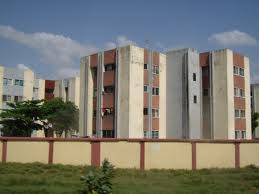
Tema, Sept. 20, GNA- A group calling itself the Concerned Citizens of Tema New Town, on Monday urged President Mills to order a thorough investigation into an incident which has led to the detention of their colleagues and the destruction of property.
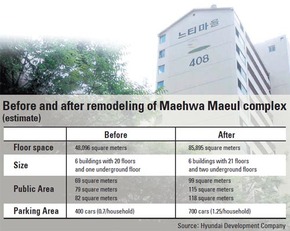
The first new towns in the Seoul metropolitan region, including Bundang, Ilsan, Pyeongchon, Jungdong and Sanbon, are undertaking remodeling projects, affecting about 12 percent of apartments in the area.
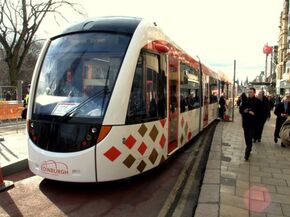
Edinburgh’s New Town, jewel in city’s crown, is now the victim of trams folly
It started when the clients apparently decided not to use the standard form of contract for a complex urban civil engineering scheme of this magnitude and cost: these clients knew better and are understood to have proposed a form of contract of their own devising. The contractor couldn’t believe his luck, presented as he was with a fine Scottish roast from which lots of extra gravy would inevitably drip.
The discovery of uncharted gas, mains water, rainwater drainage and sewage pipes, telephone and electricity cables came as a nasty surprise to the clients but not to the delighted contractor. These entirely predictable subterranean complications set the cost and delay meters running uncontrollably and set the contractor’s palms rubbing together happily.
Every time the clients drag the contractor before the agreed adjudicator, he gives a ruling on who wins and who loses. It is reliably understood that the council has won a couple of small ones but the contractor has taken all the large ones. The contractor laughs all the way to the bank.
Edinburgh’s Princes Street, scarcely an architectural jewel in Scotland’s crown, is carrying volumes of traffic so sparse as to recall 1945, except that the trams of yesteryear are nowhere to be seen or heard. Where have all the traffic and noise and pollution gone? To the acclaimed New Town – recognised by the United Nations as a World Heritage Site.
The New Town covers a very large area; it is consistent to an unrivalled degree; and it survives virtually intact. Some of the finest public and commercial monuments of the new-classical revival in Europe survive in the city, reflecting its continuing status as the capital of Scotland since 1437 and a major centre of thought and learning in the 18th century Age of Enlightenment with its close cultural and political links with mainland Europe.
The successive planned extensions of the first New Town, and the high quality of the architecture, have exerted a major influence on the development of urban architecture and town planning throughout Europe.
The city fathers have placed the city’s World Heritage Status at risk. They have turned the New Town from a jewel in Scotland’s crown to a bedlam of polluting smells and noise; the cobblestones set to enable horses to maintain their footing and traction add a roar as thousands of tyres pass over them. This new Edinburgh folly must be brought promptly under firm and hard-nosed financial control. The immediate involvement of Audit Scotland, which has been requested by MSPs and formally rejected, is an urgent necessity.
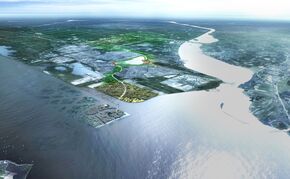
Het plan om Almere met 60.000 extra huizen de vijfde stad van Nederland te maken, vertoont scheurtjes. Beslissingen over infrastructurele verbindingen werden al uitgesteld, en dit weekend begon Rijksbouwmeester Van der Pol zich publiekelijk met project Almere te bemoeien: vrij vertaald adviseert ze vooral in de binnenstad te bouwen en plannen voor nieuwe wijken in de ijskast te bewaren.
Wethouder Adri Duivesteijn snapt niet waar zij het over heeft. Luchtkasteel of kaartenhuis? Het plan om Almere met 60.000 extra huizen de vijfde stad van Nederland te maken, vertoont scheurtjes. Beslissingen over infrastructurele verbindingen werden al uitgesteld, en dit weekend begon Rijksbouwmeester Van der Pol zich publiekelijk met project Almere te bemoeien: vrij vertaald adviseert ze vooral in de binnenstad te bouwen en plannen voor nieuwe wijken in de ijskast te bewaren. "Ik snap niet waar ze het over heeft. Het vraagstuk is nu totaal niet aan de orde. We maken plannen voor verschillende gebieden. En over twee jaar beslissen we daar pas over. In die twee jaar kan de wereld behoorlijk veranderen", reageert Adri Duivesteijn, wethouder van Almere. Hij noemt het advies om vooral eerst in de binnenstad woningen te bouwen "romantisch". "Ik ben er ook voor om zoveel mogelijk in de stad te ontwikkelen, maar dat mag niet ten koste gaan van het groen van Amsterdam en het karakter van Almere." De wethouder is zeker niet van plan om te stoppen met het maken van plannen voor binnen- of buitendijkse bebouwing. "Met die projecten moeten wij juist bewijzen waarom er een IJmeerlijn (verbinding in het water tussen Amsterdam en Almere) moet komen." Het plan om 60.000 huizen te bouwen bij Almere is al zeker acht jaar oud en werd begin dit jaar nog eens bekrachtigd in een bestuurlijke overeenkomst. "Dat aantal staat ook niet ter discussie", verzekert een woordvoerder van de Rijksbouwmeester. Hij voegt er aan toe: "We hebben met Almere alleen een conflict over de fasering." Wienke Bodeweges, voorzitter van de Neprom (vereniging van projectontwikkelaars) waarschuwt voor "of-ofdiscussies". "Binnenstedelijk bouwen is belangrijk, maar daarbuiten ook. Anders hebben we straks een probleem als de vraag naar huizen weer is toegenomen." Maarten van Poelgeest, wethouder van Amsterdam, liet zich dit weekend ook kritisch uit over de geplande uitbreiding bij Almere. In de Volkskrant van afgelopen zaterdag stelde hij dat bouwen op een weiland helemaal niet zo goedkoop is als altijd wordt beweerd. Het weiland moet namelijk ook bereikbaar zijn. En in dit geval hangt aan die verbinding (IJmeerlijn) een prijskaartje van 4 miljard euro, waar "niemand voor heeft gespaard". Duivesteijn voelt zich niet door zijn collegawethouder aangevallen.
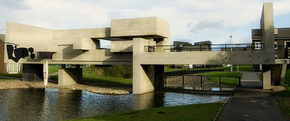
One of Britain’s original new towns in County Durham is to undergo a major redevelopment programme.
Newton Aycliffe, which was built in 1947, was the brainchild of reformer William Beveridge who inspired the Welfare State and National Health Service.
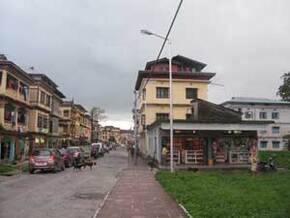
The core area of the border town of Gelephu, Bhutan could see some construction activity in the coming days with the construction freeze, enforced two years ago, now lifted. Following a notification from the director of department of urban development and engineering services last month to permit constructions, Gelephu municipal officials are processing papers for the construction of two private buildings in the core area.
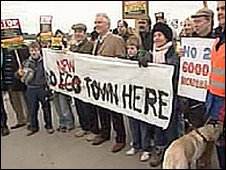
Proposals for a controversial new town in Warwickshire have been discussed at a planning inquiry considering housing targets in the West Midlands.
The planned Middle Quinton development near Stratford-upon-Avon was discussed at Molineux Stadium in Wolverhampton.
Experts considered how the 6,000-home development would impact on the area.
The project has been strongly opposed by some residents as well as celebrities including author Jilly Cooper and actor Dame Judi Dench.
Under the West Midlands scheme, up to 500,000 new homes could be built across the region over the next 20 years.
Protesters are worried about the impact of the new homes and claim there has not been sufficient consultation.
However, the developers say the site will help create affordable homes and new jobs.
The new town plans are expected to be decided by the government early next year.
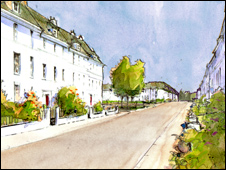
Plans for a new town near Inverness include five schools, about 5,000 homes and parkland. The site at Tornagrain stands in what is known as the A96 corridor between Inverness and Nairn.
Moray Estates appointed US planning consultant Andres Duany and his company DPZ to guide the design of the town.
A planning application has now been submitted to Highland Council and, if approved, construction work could begin in 2013.
Andrew Howard, managing director of Moray Estates, said: "We aim to create a very special place - somewhere people want to live and work and which is sustainable in the long-term.
"We were very impressed from the outset by Andres Duany and his firm, who are leading advocates of a return to traditional town planning and who have moved away from the approach which has led to sprawling suburbs with few facilities."
Exhibitions and workshops to develop the plans were attended by about 600 local people and Mr Howard said the community had been closely involved in the design process.
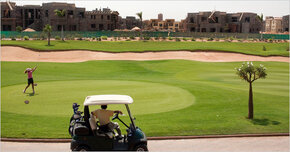
The highway west out of Cairo used to promise relief from the city’s chaos. Past the great pyramids of Giza and a final spasm of traffic, the open desert beckoned, 100 barren miles to the northwest to reach the Mediterranean.
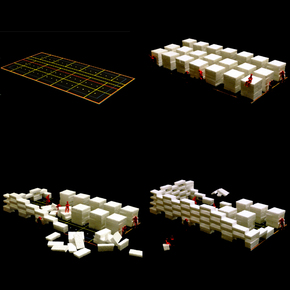
YAPYAŞA is a scientific and artistic work searching for new financial, temporal and organizational models of urban transformation.
YAPYAŞA is an interactive real-time, real-agent, role-playing city game.
YAPYAŞA utilizes parametric 3D urbanism.
YAPYAŞA is politically neutral towards all actors of urban transformation.
YAPYAŞA professionally takes a position for ‘design by collective intelligence’.
YAPYAŞA aims to demarcate Istanbul’s collective common interests through the interactions of players.
YAPYAŞA acts upon transforming the generic urban block that represents 70% of the city fabric, by addressing a variety of pressing themes
from an imminent earthquake to long-term sustainability, re-densification to legalization.
The word YAPYAŞA** [build&inhabit] is an allusion to the Turkish term YAPSAT [build&sell] and it promotes a socially sustainable urban transformation.
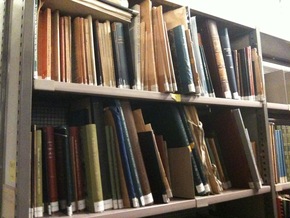
INTI has acquired thousands of important publications on New Towns and related subjects, among them rare issues from the 19th Century, the period of WWII and the ’60’s. With this acquisition INTI now has the largest possible collection of books, brochures and magazines on the building of new cities. The collection will be digitally catalogued and open to interested researchers. INTI had the opportunity to select all the relevant publications from the soon to be suspended library of the Rijksplanologische Dienst (National Planning Department).

